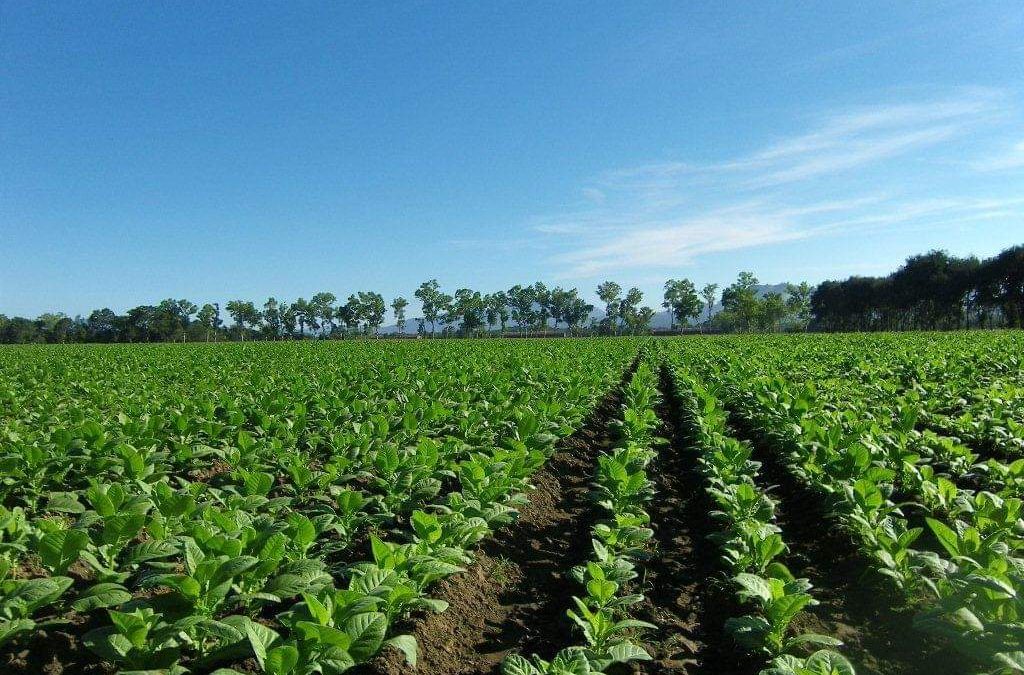-PAUL AKIWUMI
The vast majority of the continent’s populations living in the rural areas also lives in extreme poverty. The enhancement of sustainable agricultural and rural development is therefore fundamental to the attainment of the Millennium Development Goals (MDGs) in Africa, particularly the eradication of hunger and poverty.
Nigeria and Africa in general is endowed with a wide diversity of agro-ecological zones. These zones range from the heavy rain-forest vegetation with bi-annual rainfall to relatively sparse, dry and arid vegetation with low uni-modal rainfall. This diversity is a tremendous asset, but it also poses a substantial challenge for African agricultural development.
On the one hand, it creates a vast potential with respect to the mix of agricultural commodities and products which can be produced and marketed in domestic and external markets. On the other hand, the diversity implies that there are no universal solutions to agricultural development problems across the continent. Consequently, programming and implementing interventions in the sector must be tailored to the particular conditions of the different agro-ecological zones and to prevailing socio-economic conditions of rural households within individual countries.
Over the last three decades, increases in agricultural output in Africa have come largely through extending rain-fed crop cultivation, particularly food crops, on to more and more marginal soils and/or by reducing traditional fallow periods in cropping cycles.
Under conditions of rapid human population growth, rural households have been forced to adopt agricultural practices that guarantee their survival. Unfortunately, raising the productivity of crop enterprises through intensification per unit of land cultivated i.e., through increasing crop yields per hectare – has not been adequately promoted as an important household food security strategy.
Apart from commercial agriculture which covers a relatively small share of crop production, the use of agricultural inputs that is, improved seeds, inorganic fertilizers, insecticides and pesticides has been much lower in Africa than in other parts of the developing world. Inorganic fertilizer use is often less than ten kilograms of nutrients per hectare. Use of agro-chemicals and/or integrated pest management techniques to deal with plant diseases and pests is still largely confined to export crops.
Continuous expansion of crop cultivation has been done at the expense of the natural resources. One consequence has been the accelerated destruction of forest resources by land clearing and over-exploitation for fuel-wood and other household uses. Another, more subtle effect, has been the deterioration of livestock farming as larger and larger areas formerly allocated for dry season grazing are put under the hoe and plough.
Over-exploitation of fisheries resources has been a serious problem where common resources are exploited for private gain. Lack of adequate regulatory provisions and, where present, their ineffective enforcement have resulted in catch declines and have severely challenged prospects for adequate stock replenishment in the future.
Taking stock of efforts to transform Africa’s agricultural sector
The Comprehensive Africa Agriculture Development Programme (CAADP) is Africa’s policy framework for agricultural transformation. Created in Maputo, Mozambique in 2003, commitments to prioritize food security and nutrition, economic growth and prosperity in Africa were further strengthened in the 2014 Malabo Declaration.
The commitments were reinforced through the development of Africa’s common position on food systems, to help deliver on targets of the African Union’s Agenda 2063 and the Sustainable Development Goals. Despite featuring across Africa’s development agenda, and the African Union dubbing 2022 as the “Year of Nutrition”, the continent’s performance remains subdued.
It was in Malabo that African countries adopted a resolution to commit at least 10% of their annual public budget to agriculture and rural development and to achieve agricultural value-added growth rates of at least 6% per annum.
A cornerstone of this ambition was the implementation of national agriculture investment plans (NAIPs) – country specific visions and strategies to put the CAADP agenda into practice. At the same time, AU heads of state and government committed to ending hunger by 2025 and resolved to halve the current levels of post-harvest losses by the same year.
In 2020, only four countries – Lesotho, Malawi, Ethiopia and Benin – had government expenditures in agriculture that met or exceeded the target of 10% of annual public expenditures.
Africa-wide, just 2.1% of public budget expenditures were dedicated to agricultural spending. Similarly in 2020, only eight countries met the 6% agricultural value-added growth rate target – Lesotho, Zambia, South Africa, Senegal, Ghana, Angola, Kenya and Guinea.
Africa-wide, the growth rate for agricultural value added was just 2.6% in 2020 (see the figure below). Overall, of the 51 member states that reported progress in implementing the Malabo Declaration during the 2021 biennial review cycle, only one country – Rwanda – is on track towards achieving the CAADP Malabo commitments by 2025.
Related posts
Global | Didi Angaye Earns A Distinction Award, Another Feather To The Cap
On a bright sunny day, in the month of July, 2024, the prestigious Staffordshire University located in the West Midlands of England organised its Award giving and Graduation ceremony to honour graduates of various educational programmes and courses which it offers. Didi Timipah Angaye,…
Olu Of Warri Bags Award In UK, Wife Advocates Return To Cultural Values
The Olu of Warri, Ogiame Atuwatse III, has received the Leadership and Community Development award at the 14th African Achievers Awards (AAA), which took place at the Parliament House, United Kingdom. The award was presented by a member of the House of Lords, London, Rt…
Brit Awards | Asake, Burna Boy And Other ‘New Cats’ Get Nominations
Nigerian singers Burna Boy, Asake, and Rema have been nominated for the 2024 Brit Awards. The nomination list for the annual music awards show was released on Wednesday 25, January 2024. Burna Boy and Asake made the ‘Best International Artiste’ category, while ‘Calm…
Brit Awards 2024 | The Full List Of Artist(e)s
This year’s Brits nominees have been revealed ahead of the ceremony in London in March. Dua Lipa is the first star confirmed to perform at the event – but how many awards is she up for? Musicians including Raye, Central Cee, J Hus and Blur are also…
Despite Increased Transfer Volume And Institutional Adoption, Bitcoin Stays Below $60K
Bitcoin’s price hovers around $59K as increased transfer volume indicates a stable demand among investors. CryptoQuant data indicates buyers are absorbing the panic selling pressure around the $57K price level. Bitwise’s latest report suggests that institutional investors are still buying Bitcoin despite the recent price…
Traders Focus On Meme Coins As Bitcoin, Ethereum And XRP Erase Recent Gains
Bitcoin, Ethereum and XRP dip under key support levels at $60,000, $2,600 and $0.60 respectively. Tron ecosystem’s meme launchpad SunPump generates over $1.1 million in revenue within twelve days of its launch. Tron network daily revenue reached a record high of $26.83 million on Tuesday,…
Top 10 Cryptocurrencies To Invest in January 2024
-Michael Adams From Bitcoin and Ethereum to Dogecoin and Tether, there are thousands of different cryptocurrencies, making it overwhelming when you’re first getting started in the world of crypto. To help you get your bearings, these are the top 10 cryptocurrencies based on their market…
The Risk And Reward Of ChatGPT In Cybersecurity
Juan is an experienced CTO with a demonstrated history of working in the computer and network security industry. He is an information technology professional skilled in SAP and Oracle applications, computer forensics, vulnerabilities research, IPS/IDS and information security. Unless you’ve been on a retreat in…











